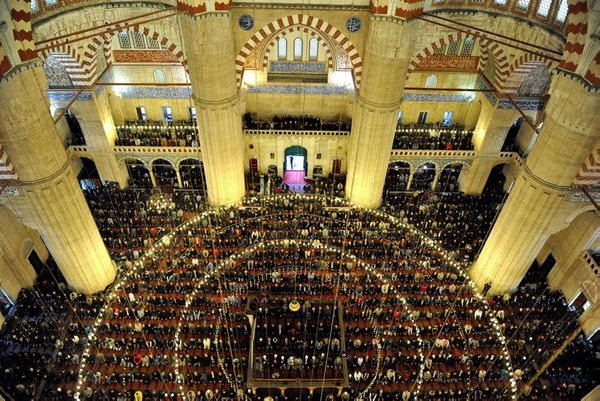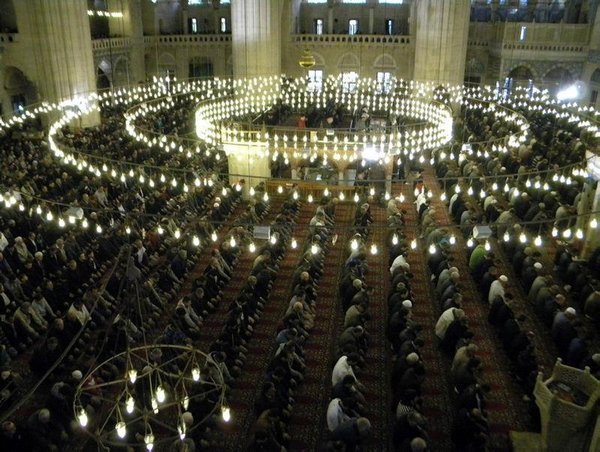It is rumored that Prophet Muhammad appeared in a dream to Ottoman Sultan Selim II and pointed to Edirne to build the Selimiye Mosque; thus, Selim ordered the structure to be built in Kavak Square.
It took six years to construct the Selimiye Mosque, which was designed by Mimar Sinan. He called this work of art, which he built for the 11th Ottoman Sultan Selim II, "My masterpiece." It is unsurpassed in terms of architectural and aesthetic value and was built at a time when Turkish-Islamic civilization had reached its peak in the Ottoman Empire. The historic mosque is admired by visitors and art historians and has tremendous significance.

In 2011, the mosque was recognized by UNESCO and was added to UNESCO's World Heritage List.
Edirne Culture and Tourism Director Ahmet Hacıoğlu told Anadolu Agency (AA) that Selimiye, which is admired for its minbar engraved like lace, ornaments and blueprints, has its own unique codes.

Hacıoğlu said that Selimiye bears the traces of the five pillars and fards of Islam as well as tawhid belief. "As soon as you enter Selimiye, you encounter a dome that surrounds you. This huge dome speaks of the oneness of Allah. The five-step windows represent the five pillars of Islam. The giant dome, 32 meters in diameter, marks the 32 "fards" [obligations] of Islam. The platforms of the four muzzins indicate four sects. The six paths of the rear minarets depict the six pillars of faith, while 12 marble columns are interpreted as the 12 fards of prayers," Hacıoğlu said.

Pointing out that calligrapher Hasan Çelebi, who wrote the letters on the dome, went blind and then lost his life after washing lime powder in his eyes with the same water he used to wash his pens, Hacıoğlu said: "Every time I come under this dome, I hear Hasan Çelebi screaming. He applied such calligraphy that you can sit under the dome for two minutes, and then you will see that the dome flattens. Çelebi did not see the mosque upon its completion. It is said that those who know this situation hear Çelebi's voice."

He pointed out that the minarets, regarded as unique structures in the world due to their thinness and length, are important in revealing the mastery of Sinan. "The minarets have three paths. Mimar Sinan placed three paths in the 82-meter minaret; thus, those who climb to the sharafas do not see one another. The first path goes to the first and third sharafas; the second path leads to the second and third sharafas; and the third path leads directly to the third sharafa," he said.

Indicating that the inverted tulip motif carved on the muzzin's platform tells different stories, Hacıoğlu said the most accepted one is the story of a stubborn landlady, explaining that when the architect Sinan decided to build a mosque in Kavak Square, he had a hard time persuading a woman who had a tulip garden, and eventually the woman gave up her land, and it is rumored that Sinan engraved an inverted tulip figure on the side of the mosque's muezzin platform to symbolize this stubbornness. "But the real story is the story of Mimar Sinan and his granddaughter Fatma," he continued. "When Mimar Sinan came to Edirne from Istanbul to build Selimiye, he brought his eight-year-old beloved granddaughter with him to Edirne so as not to miss her. Due to the longing he felt for his granddaughter who got sick and died, he put a bent tulip on the marble sarcophagus in the tomb he made for his granddaughter. One of the apprentices who saw this engraved his master's sorrow on Selimiye. This is the real story of the myth of the inverted tulip."
